Plants and Microbes: Nature's Solution to Toxic Soil
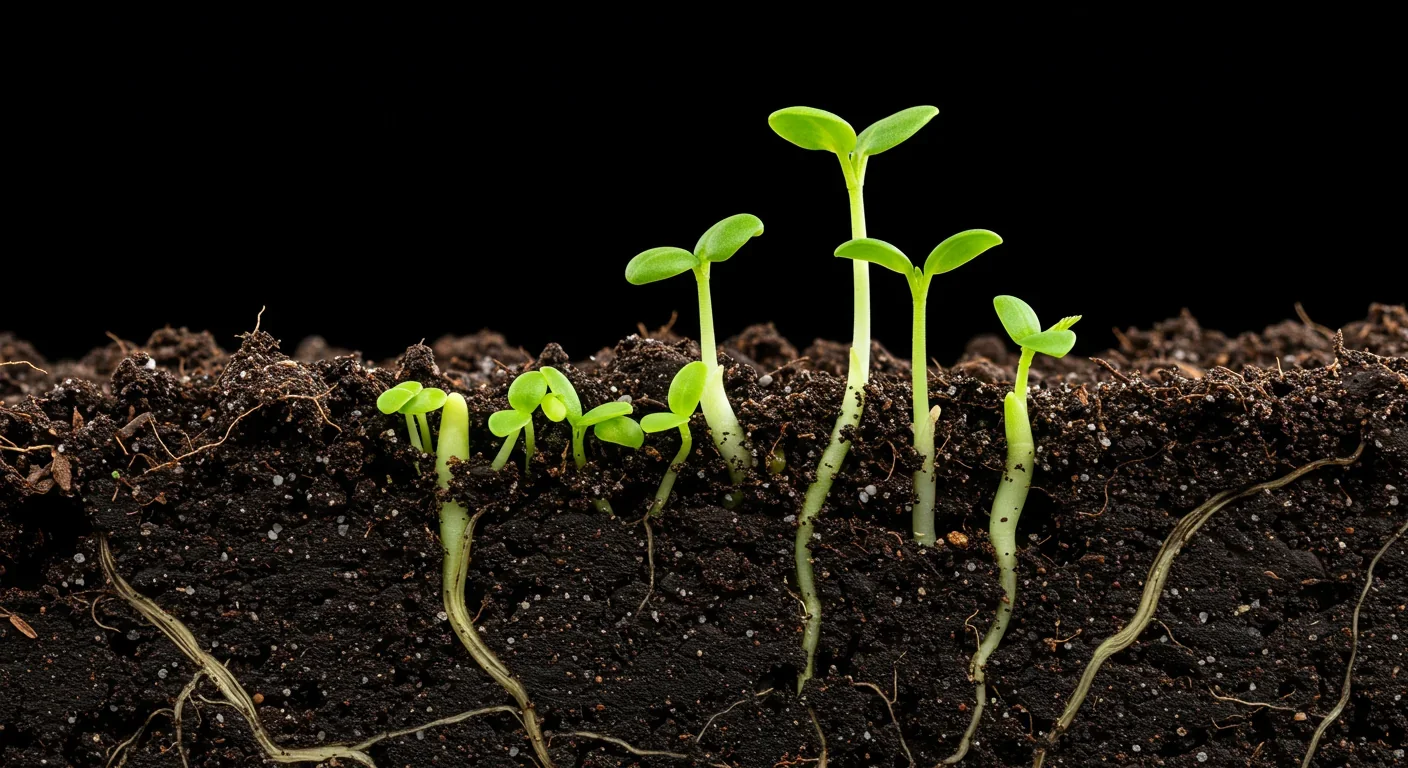
TL;DR: Cuttlefish pass the marshmallow test by waiting up to 130 seconds for preferred food, demonstrating time perception and self-control with a radically different brain structure. This challenges assumptions about intelligence requiring vertebrate-type brains and suggests consciousness may be more widespread than previously thought.
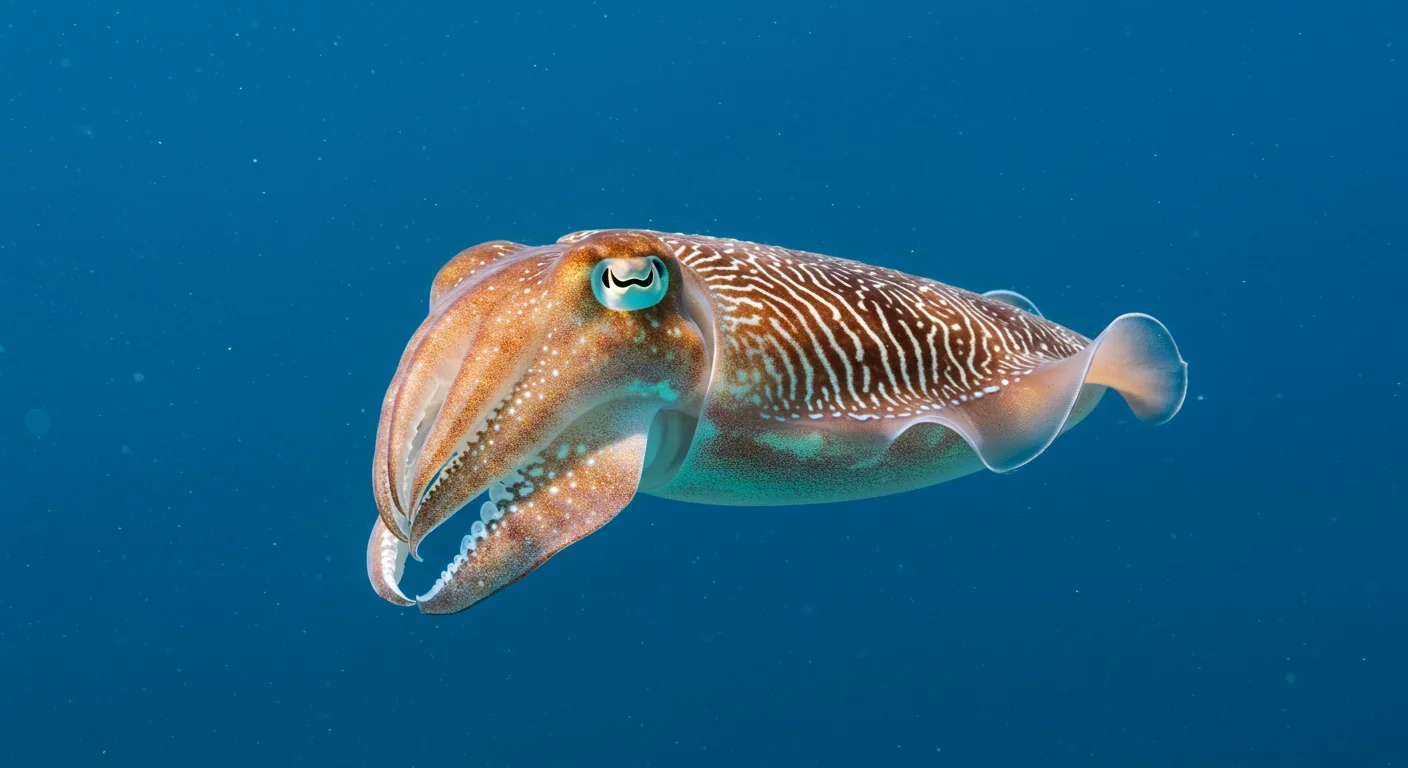
Picture a small child sitting alone at a table, staring at a marshmallow. The deal is simple: wait 15 minutes without eating it, and you'll get two. It's a test of willpower that became legendary because it supposedly predicts everything from academic success to emotional health. Now imagine that same test, but underwater—and the subject passing it isn't a child, but a color-shifting mollusk with nine brains and blue blood.
Cuttlefish can wait. They can assess time intervals, remember which foods they prefer, and make strategic decisions about when to eat based on what's coming later. When University of Cambridge researchers adapted the famous marshmallow test for common cuttlefish, all six subjects chose to delay gratification, waiting up to 130 seconds for their preferred live shrimp rather than settling for an immediate but less desirable prawn. The finding isn't just surprising because cuttlefish passed a test designed for humans—it's startling because they did it with a brain that shares virtually nothing in common with ours.
The implications ripple far beyond marine biology. If an invertebrate that last shared an ancestor with us 600 million years ago can manipulate time and memory to optimize future outcomes, what does that tell us about the fundamental nature of intelligence, consciousness, and self-control? We're being forced to rethink assumptions about what kinds of neural architecture can support complex cognition—and whether the path to smart behavior is far more diverse than we imagined.
The original Stanford marshmallow experiment, conducted in the 1970s, aimed to measure impulse control in children. Researchers wanted to know whether the ability to delay gratification correlated with later life outcomes. Decades of follow-up studies suggested it did, though recent replications have complicated the picture by showing that socioeconomic factors matter more than previously thought.
Alexandra Schnell and her team at Cambridge didn't set out to replicate the marshmallow test exactly. They were interested in something more fundamental: can cuttlefish perceive and manipulate time the way vertebrates do? The experimental design was elegant. Six common cuttlefish (Sepia officinalis) were placed in a tank with two transparent chambers. Each chamber had a different symbol: a circle meant food was available immediately, a triangle meant a delay of 10 to 130 seconds, and a square meant never. The immediate option was always a less-preferred Asian shore crab. The delayed option was always a preferred live grass shrimp.
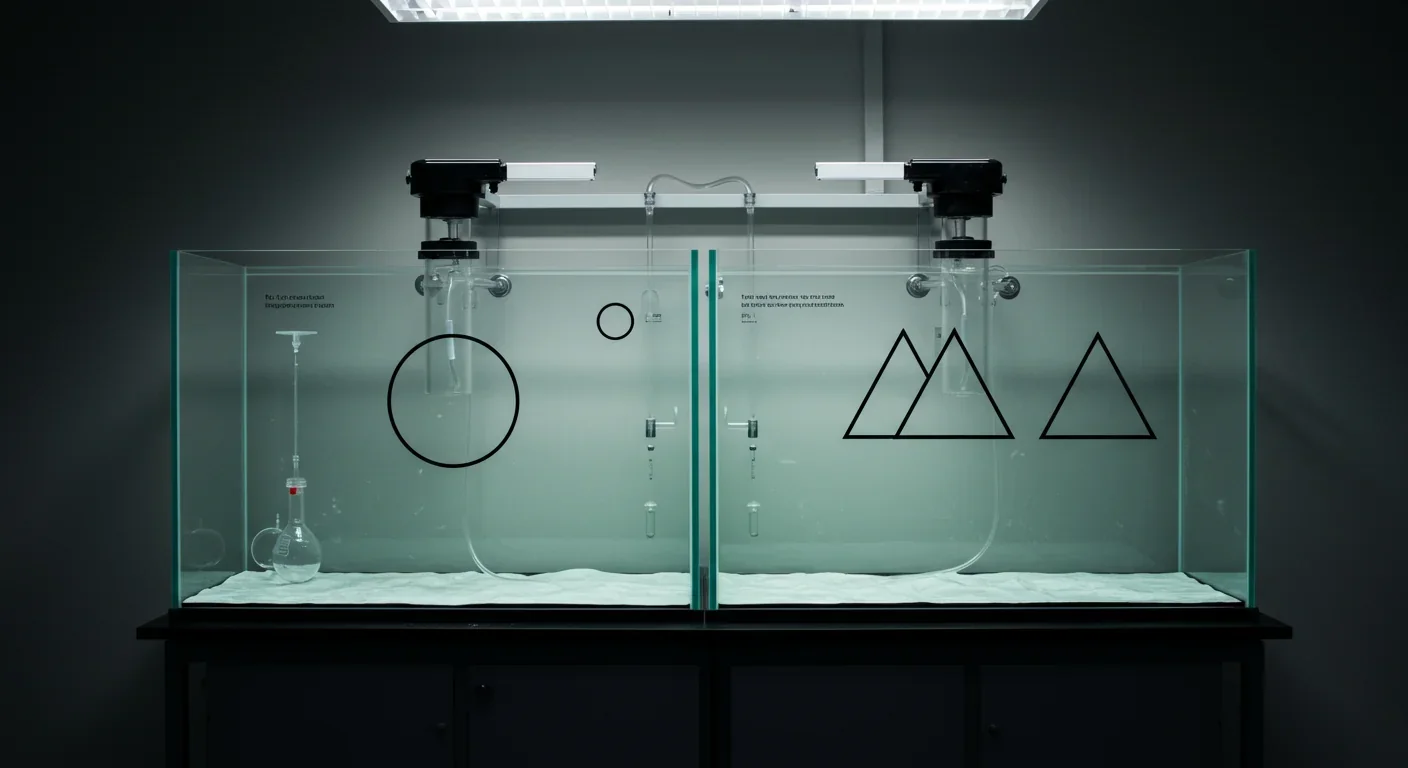
The cuttlefish had to make a choice. If they could recognize the symbols, assess the time cost, and remember which food was better, they'd wait. And wait they did. Every single cuttlefish in the test condition consistently chose to delay gratification for the shrimp, tolerating waits ranging from 50 to 130 seconds. Control group cuttlefish, who couldn't access the better food no matter how long they waited, didn't bother waiting at all—proof that they understood the contingency, not just the symbols.
Cuttlefish matched the self-control abilities of chimpanzees, crows, and parrots—despite having a completely different kind of nervous system structured like a doughnut around their esophagus.
What makes this even more impressive is the comparison to other animals. Chimpanzees, crows, and parrots—species with large, complex brains—can delay gratification for similar durations. Cuttlefish match them, despite having a completely different kind of nervous system. Their brain is structured more like a doughnut around their esophagus than a centralized command center.
Understanding the marshmallow test requires more than patience. It requires episodic-like memory—the ability to recall what happened, where it happened, and when it happened. Without that, you can't plan for the future because you can't connect past experiences to future rewards.
Cuttlefish have this capacity, and unlike humans, they don't lose it with age. In another study by Schnell's team, 24 cuttlefish aged 10 to 12 months (young adults) and 22 to 24 months (elderly) were trained to remember what they ate, where they ate it, and how long ago. The task required them to associate specific foods with flag-marked locations and recall time intervals between feedings.
Older cuttlefish performed just as well as younger ones—and sometimes better. Even as their muscles weakened and their appetites declined, their memories remained sharp until the last two or three days of life. This age-invariant memory challenges a long-held assumption: that cognitive decline is a universal feature of aging. It's not. Cuttlefish have found an evolutionary solution that keeps their episodic memory intact when it matters most—during their single breeding season at the end of life.
"Cuttlefish can remember what they ate, where, and when, and use this to guide their feeding decisions in the future. What's surprising is that they don't lose this ability with age."
— Alexandra Schnell, University of Cambridge
The neural basis for this resilience lies in a structure called the vertical lobe. In cuttlefish, the vertical lobe is associated with learning and memory, functioning somewhat like the hippocampus in vertebrates. But unlike the hippocampus, which often shrinks with age, the cuttlefish vertical lobe doesn't deteriorate until just before death. This suggests that neural decline isn't inevitable—it's a design choice shaped by evolutionary pressures.
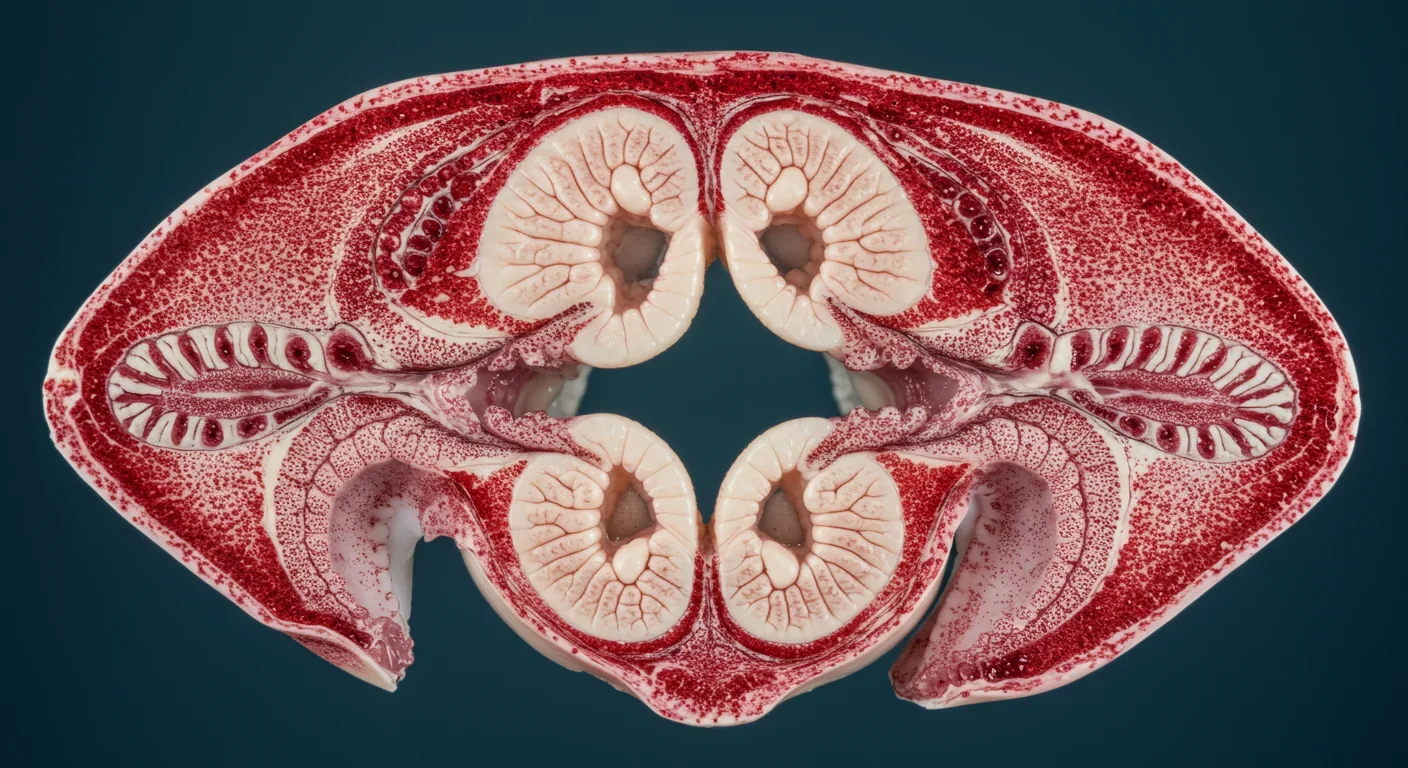
To understand how alien cephalopod intelligence really is, you need to understand their nervous system. Cuttlefish don't have a single centralized brain the way we do. Instead, they have a distributed network of neurons, with a significant proportion located in ganglia throughout their eight arms and two tentacles. The central brain consists of 32 distinct lobes arranged around the esophagus, including specialized regions for vision, chromatophore control (those amazing color changes), and the vertical lobe for memory.
This architecture creates a fundamentally different kind of intelligence. In vertebrates, information flows hierarchically: sensory input goes to the brain, the brain makes decisions, and motor commands go out to the body. In cuttlefish, decision-making can happen locally. Arms can learn tasks without the central brain's involvement, a bit like having smart peripherals that don't need constant supervision from headquarters.
The vertical lobe itself resembles a cerebellum-like structure, with a sparsely connected encoder-decoder network. Lesion studies have shown that damage to this area impairs spatial learning and memory formation, confirming its critical role in cognition. But the vertical lobe doesn't just store memories—it integrates temporal information, allowing cuttlefish to track when events occurred and predict when future events will happen.
This raises a fascinating question: if you can build time perception and self-control with a radically different neural substrate, what does that say about the necessity of specific brain structures? Do you need a cortex to think about the future? Do you need a hippocampus to remember the past? Cuttlefish suggest the answer is no. Intelligence isn't about having the right parts—it's about having the right connections.
Evolution doesn't hand out cognitive abilities for free. Self-control is metabolically expensive, so there must be a strong selective pressure to maintain it. For cuttlefish, that pressure likely comes from their unique foraging ecology.
Cuttlefish are ambush predators. They rely on camouflage to avoid detection, blending seamlessly into coral reefs and sandy bottoms by rapidly changing the color and texture of their skin. Breaking camouflage to feed exposes them to predators like sharks, large fish, and seals. Every feeding event is a calculated risk.
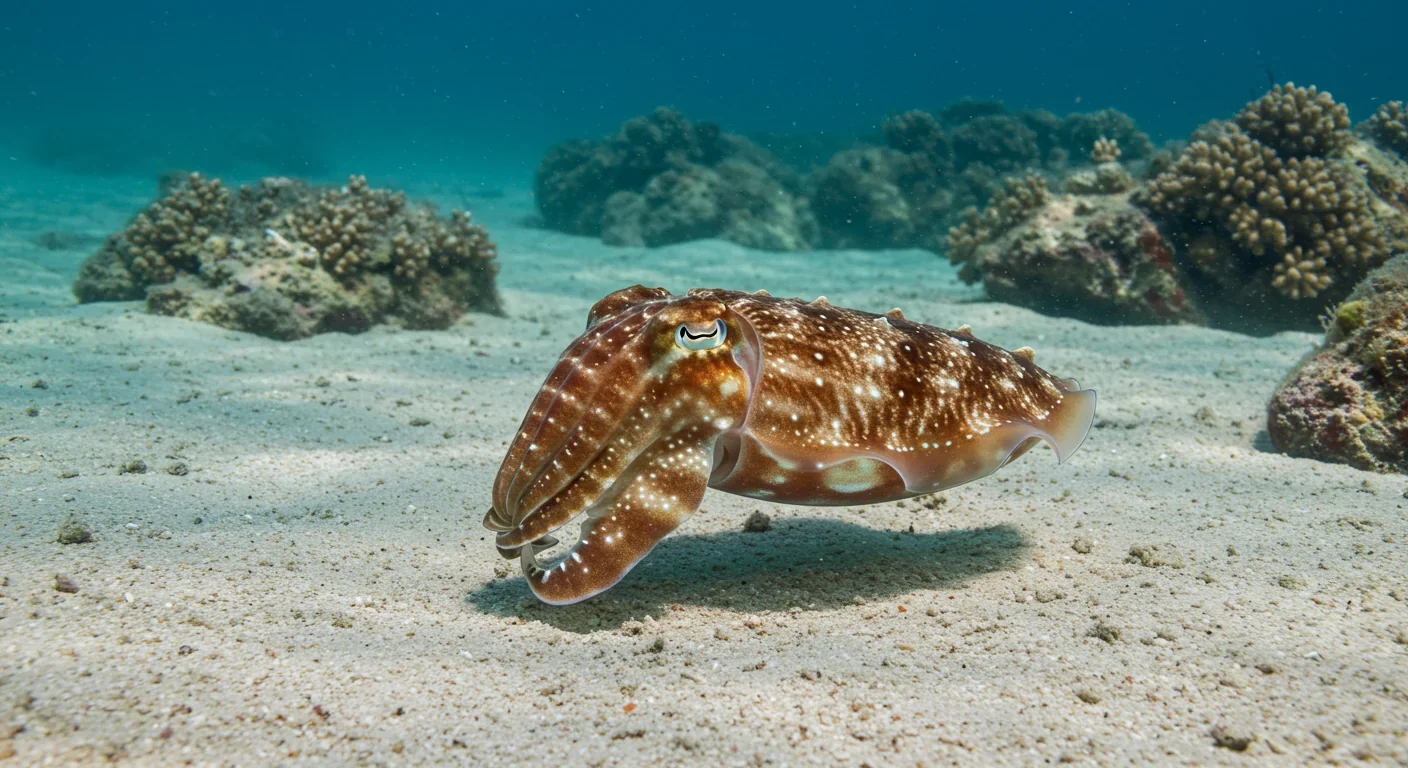
Schnell and her colleagues hypothesize that delayed gratification evolved as a risk-reduction strategy. If a cuttlefish can wait for a higher-quality meal, it reduces the total number of times it needs to expose itself. One excellent meal is worth more than several mediocre ones if each feeding attempt carries a survival cost. This ecological context makes time perception adaptive: knowing when to strike and when to wait isn't just smart, it's essential.
Cuttlefish breed only once before dying, creating intense evolutionary pressure to remember potential mates and optimize every decision during their single reproductive season.
But there's another wrinkle. Cuttlefish are semelparous, meaning they breed once and then die. This creates intense selection pressure to maximize reproductive success during that single breeding season. Remembering where and when you encountered potential mates, along with their quality, helps ensure you don't waste opportunities. The same memory systems that support delayed gratification for food also support strategic mate choice.
One of the most intriguing findings from the marshmallow study wasn't just that cuttlefish could wait—it's that individuals varied in how long they'd wait, and that variation correlated with another cognitive trait: learning flexibility.
After the initial delayed gratification tests, researchers introduced a sudden change. The symbolic cues were switched so that a different symbol now predicted the food reward. This required the cuttlefish to inhibit their learned associations and adapt to new rules—a test of cognitive flexibility.
The cuttlefish that adapted fastest to the rule change were the same individuals who had waited longest for the shrimp reward earlier. This correlation suggests that delayed gratification and learning speed aren't separate abilities—they draw on a shared cognitive resource. That resource might be working memory capacity, attentional control, or something else, but the link implies that cuttlefish possess what psychologists call executive function: the ability to manage competing goals and adjust behavior based on context.
This individual variation matters because it hints at personality-like differences in cephalopods. Not all cuttlefish think the same way. Some are more patient, more flexible, more willing to take risks. That cognitive diversity might be adaptive, allowing populations to cope with unpredictable environments where sometimes the cautious strategy wins and sometimes the bold one does.
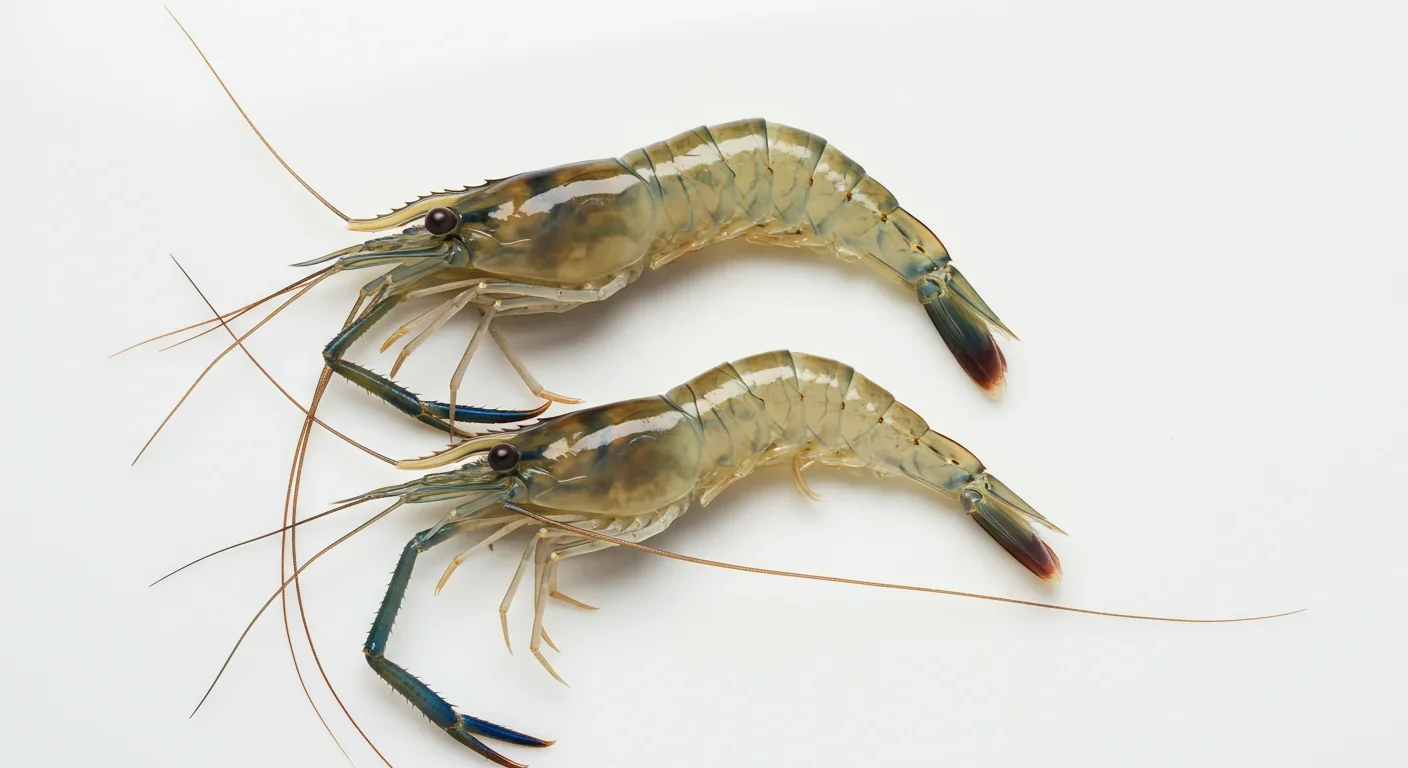
There's another layer to the marshmallow experiment that's easy to overlook: the cuttlefish learned to use symbolic cues to predict future events. A circle meant "now," a triangle meant "later," and a square meant "never." These aren't natural stimuli. They're arbitrary symbols that had to be learned through training.
Symbolic representation is usually considered a high-level cognitive skill, associated with language and abstract thought. Yet cuttlefish, with no cortex and no linguistic system, mastered it. They didn't just respond to the presence or absence of food—they interpreted signs and used them to make predictions about time and reward.
This capacity for symbolic processing suggests that the cognitive toolkit for abstraction may be more widespread than we thought. You don't need a primate brain to represent "if-then" relationships or to build mental models of causality. The underlying computational principles might be simpler and more universal than the specific neural implementations.
When species separated by hundreds of millions of years of evolution independently develop the same cognitive ability, it's called convergent evolution. It's why bats and birds both have wings, even though their common ancestor didn't fly. The same environmental pressures produced similar solutions using different biological materials.
Self-control appears to be one of those convergent solutions. Primates evolved it to navigate complex social hierarchies and manage resource scarcity. Corvids (crows and ravens) evolved it to cache food and remember where they hid it. Parrots evolved it to manage social bonds and coordinate foraging in flocks. Now we know cuttlefish evolved it to optimize predation risk.
Each of these lineages built time perception and impulse control using different neural hardware. Primates use the prefrontal cortex. Birds use the nidopallium caudolaterale. Cuttlefish use the vertical lobe. Despite these differences, the behavioral output is remarkably similar: all can wait for better rewards, adjust waiting times based on probability, and integrate past experiences to predict future outcomes.
This convergence tells us something profound: certain cognitive abilities are almost inevitable given the right ecological pressures. If your survival depends on managing trade-offs between immediate and delayed rewards, you'll evolve some form of self-control, regardless of whether you have a backbone.
The most speculative but perhaps most important implication of cuttlefish cognition concerns consciousness. Are cuttlefish aware of their own waiting? Do they experience something like impatience or anticipation?
We don't know, and we may never know for certain. But the complexity of their behavior suggests at least some form of subjective experience. To delay gratification, you need to represent both the present state (I'm hungry now) and a future state (I'll be more satisfied later). That requires a model of time, a model of self, and a way to compare the two models to make a decision.
Philosophers sometimes distinguish between "access consciousness" (information available for reasoning and decision-making) and "phenomenal consciousness" (the subjective feeling of what it's like to experience something). Cuttlefish clearly have access consciousness—they process information, make plans, and adjust behavior. Whether they have phenomenal consciousness is harder to say.
"The United Kingdom recently recognized cephalopods as sentient beings in its animal welfare laws, granting them legal protections previously reserved for vertebrates."
— UK Animal Welfare Legislation
But recent work on animal welfare has started to take cephalopod cognition seriously. The United Kingdom recently recognized cephalopods as sentient beings in its animal welfare laws, granting them legal protections previously reserved for vertebrates. The evidence for sentience includes their capacity for pain, memory, learning, and now, delayed gratification—all markers that suggest some inner mental life.
If cuttlefish are conscious, even in a limited way, it forces us to reconsider what consciousness is and where it comes from. Is it a property of certain types of neurons? A product of specific circuit architectures? Or is it something more abstract—an emergent property of any system complex enough to model itself and its environment over time?
For most of human history, we've equated intelligence with brain size and structure. Bigger brains, more neurons, more cortical folds—these were the metrics of cognitive power. The discovery of cephalopod intelligence upends that logic.
Cuttlefish have about 500 million neurons, compared to roughly 86 billion in humans. Yet they can perform cognitive tasks that challenge children and rival some primates. Their success isn't about raw neuron count—it's about how those neurons are organized and deployed.
This realization has implications beyond biology. In artificial intelligence, researchers have long debated whether intelligence requires specific architectures (like transformers or neural networks modeled on the mammalian cortex) or whether any sufficiently complex computational system can be intelligent. Cuttlefish suggest the latter. Intelligence is substrate-independent. It's a pattern, not a part.
This also changes how we think about non-human intelligence more broadly. We've tended to rank animal cognition on a ladder, with humans at the top and simpler organisms below. But that model assumes all intelligence evolves toward a single peak—ours. Cuttlefish show that intelligence isn't a ladder; it's a sprawling landscape with multiple peaks, each shaped by different evolutionary histories and ecological demands.
The marshmallow test is just the beginning. Researchers are now exploring other dimensions of cephalopod cognition, from social learning to tool use to spatial navigation. Each new study reveals capacities that challenge our assumptions.
One emerging question is whether cephalopods can engage in mental time travel—the ability to project themselves into the future and imagine hypothetical scenarios. Humans use this ability constantly: we plan vacations, rehearse conversations, and worry about outcomes that haven't happened yet. Some evidence suggests that crows and apes can do this too. Can cuttlefish?
Another frontier is understanding the neural basis of cephalopod learning at a finer scale. New imaging techniques and genetic tools are making it possible to watch neurons fire in real time as cuttlefish solve problems. Mapping the circuits responsible for memory, time perception, and decision-making could reveal universal principles of cognition that apply across species.
There's also practical value in this research. Understanding how distributed nervous systems solve complex problems could inspire new approaches to artificial intelligence and robotics. Decentralized decision-making, like the kind seen in cephalopod arms, might be more efficient for certain tasks than centralized control.
What do cuttlefish teach us about ourselves? First, that intelligence is more common and more diverse than we assumed. The ability to plan, remember, and exercise self-control isn't unique to vertebrates or even to animals with large brains. It's a toolkit that evolution has assembled repeatedly, using whatever materials are at hand.
Second, that consciousness might be more widespread than we're comfortable admitting. If an invertebrate with a doughnut-shaped brain can pass tests designed for human children, we need to expand our moral circle. The line between "thinking beings" and "mere animals" is blurrier than we thought.
Third, that convergent evolution offers a natural experiment in cognitive science. By comparing species that evolved similar abilities independently, we can identify which features are essential and which are accidental. The fact that cuttlefish, crows, and chimps all exhibit delayed gratification suggests that this ability relies on common computational principles, even when the hardware differs.
Finally, cuttlefish remind us that nature is full of surprises. For every assumption we make about how minds must work, there's likely an organism that proves the exception. The universe of possible minds is vast, and we've only begun to explore it.
The next time you watch a cuttlefish ripple through the ocean, shifting colors and textures in a hypnotic dance, remember: behind those alien eyes is a mind that can plan, remember, and wait. A mind that manipulates time just like we do, built from an entirely different blueprint. And in that difference lies a profound lesson about the nature of intelligence itself.

Curiosity rover detects mysterious methane spikes on Mars that vanish within hours, defying atmospheric models. Scientists debate whether the source is hidden microbial life or geological processes, while new research reveals UV-activated dust rapidly destroys the gas.

CMA is a selective cellular cleanup system that targets damaged proteins for degradation. As we age, CMA declines—leading to toxic protein accumulation and neurodegeneration. Scientists are developing therapies to restore CMA function and potentially prevent brain diseases.

Intercropping boosts farm yields by 20-50% by growing multiple crops together, using complementary resource use, nitrogen fixation, and pest suppression to build resilience against climate shocks while reducing costs.

Cryptomnesia—unconsciously reproducing ideas you've encountered before while believing them to be original—affects everyone from songwriters to academics. This article explores the neuroscience behind why our brains fail to flag recycled ideas and provides evidence-based strategies to protect your creative integrity.

Cuttlefish pass the marshmallow test by waiting up to 130 seconds for preferred food, demonstrating time perception and self-control with a radically different brain structure. This challenges assumptions about intelligence requiring vertebrate-type brains and suggests consciousness may be more widespread than previously thought.

Epistemic closure has fractured shared reality: algorithmic echo chambers and motivated reasoning trap us in separate information ecosystems where we can't agree on basic facts. This threatens democracy, public health coordination, and collective action on civilizational challenges. Solutions require platform accountability, media literacy, identity-bridging interventions, and cultural commitment to truth over tribalism.

Transformer architectures with self-attention mechanisms have completely replaced static word vectors like Word2Vec in NLP by generating contextual embeddings that adapt to word meaning based on surrounding context, enabling dramatic performance improvements across all language understanding tasks.